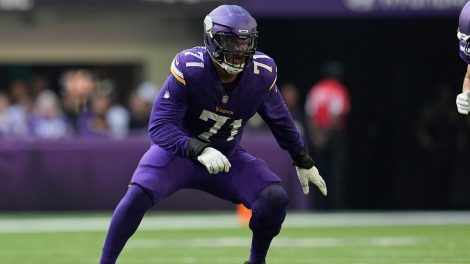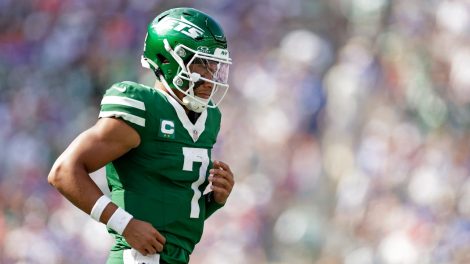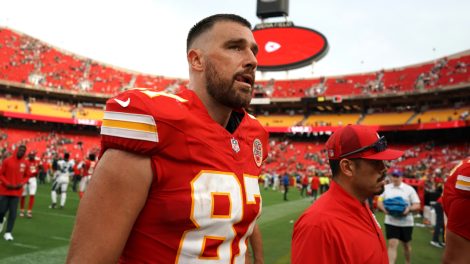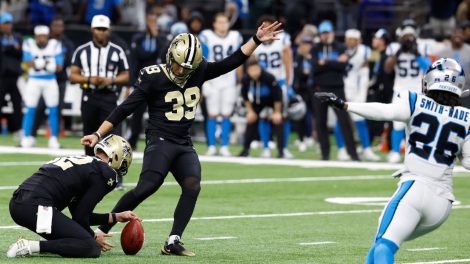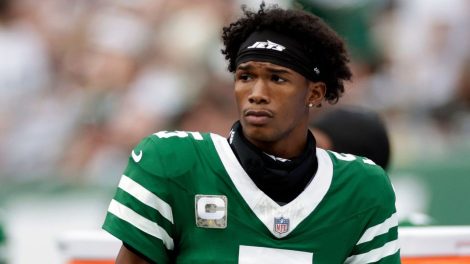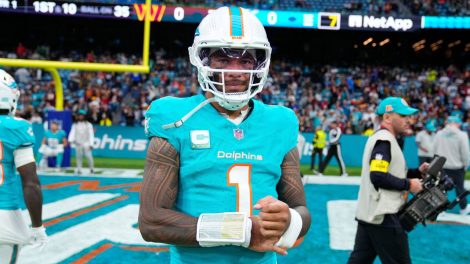When Michael O’Connor first arrived in Vancouver for a weekend visit compliments of the University of British Columbia, the mid-January weather was unseasonably pleasant. This was good news for UBC’s staff, who were hoping to woo O’Connor, a quarterback at Penn State, on the off chance he would leave the NCAA’s Div. I to join the Thunderbirds. The point they hoped to impress on him: CIS football could be a worthy training ground for a potential career in pro football.
O’Connor didn’t really see himself playing north of the border, but he’d always been curious about Canada’s west coast. “It’s going to sound bad, and maybe I shouldn’t say this, but it was a free trip to Vancouver,” says O’Connor, now in his first year with the team. “I’d never been here. I figured, what’s the worst that could happen? Might as well go check it out.”
Asked how he ended up playing at UBC, then, and O’Connor smiles. “It’s pretty crazy,” he says.
O’Connor had, until recently, been following a carefully mapped-out path. As a kid growing up in Orleans, Ont., he’d aspired to play in the NFL, so like anyone with talent and a dream, he made a blueprint for his future. He spent his free time training. He crisscrossed the northeastern United States with his trainer, Victor Tedondo, attending weekend camps in the hopes of gaining skills and getting noticed. Tedondo, a former running back, had played high-school football in Ottawa and had received a partial scholarship offer to Syracuse, which he’d reluctantly turned down. He was keenly aware of the opportunities available to Canadian youngsters in the American system—at both the high-school level and in the elite programs of the NCAA. To make the pros, Tedondo knew that O’Connor would need to land at a top college.
By the time O’Connor was 15 he’d left his family in Orleans to live in Chattanooga, Tenn., where he played football at the Baylor School. For his last year of high school he relocated again, this time to the IMG Academy in Bradenton, Fla. The school was launching a football program; O’Connor would be their quarterback.
The plan seemed to be working: In 2014, ESPN named O’Connor the No. 6 high-school quarterback prospect in the United States. He was courted by top schools and eventually settled on Penn State, where Bill O’Brien ran a pro-style offence that suited O’Connor’s game.
But something unforeseen happened: O’Connor was in St. Petersburg, Fla., for the Under Armour All-America Game when, watching ESPN, he saw O’Brien’s name flash across the ticker. O’Brien had been hired as head coach of the Houston Texans. O’Connor could’ve opted to go elsewhere, but he decided to stick with Penn State. There were compelling reasons to remain committed: He’d be close to home, and Penn State had a good business school, where O’Connor planned to study.
But his first and only year there, in 2014, was a disappointment: Penn State’s new coach, James Franklin, wanted to employ a dual-threat quarterback, and O’Connor, not fitting the team’s offence, was redshirted. Despite what he insists was a “fun” experience overall, he decided, midway through the season, that he would declare his intention to play elsewhere.
As it happens, Blake Nill was making a transition of his own. The veteran CIS coach and former CFL defensive lineman—whose his nine-year tenure with the University of Calgary Dinos had been instrumental in turning a struggling football team into a powerhouse—had recently arrived at UBC with the promise of revitalizing the Thunderbirds football program.
“It was all over social media,” says Nill of the news that O’Connor was thinking of leaving Penn State.
So Nill reached out to the quarterback in a way that seemed natural: he found him on Facebook and sent him a message.
“I convinced him to come out for a visit,” says Nill, noting that there was no bigger prospect for a CIS school than O’Connor.
While O’Connor admits that he’d agreed to the visit mostly because he wanted to check out Vancouver, Nill had his own ulterior motive for bringing the kid out west: “My initial goal was just to take a picture of him on campus that I could put out there on social media, that said: This is the kind of recruit that UBC will now be going after.”
Of course, Nill was hoping O’Connor would say yes, but he figured his chances were slim at best.
A funny thing happened, though: Somewhere along the way, O’Connor became convinced that a move to Canada made sense. Part of Nill’s pitch to the young quarterback was the promise of being part of building something new. The coach told O’Connor about the school’s plans—a vision for transforming UBC’s team into a west coast equivalent of the University of Laval’s famed football program.
“It was all of that,” says O’Connor. “Great academic school, Coach Nill and all his prior success, the chance to build something special here. And living out here in Vancouver—beautiful city.”
It also helped that participating in CIS football meant O’Connor would have the opportunity to play up to five years. Staying in the NCAA’s Div. I would have required sitting out for a year, with only three years of eligibility once he was able to play again.
It wasn’t an easy decision. “Some people didn’t really understand,” says O’Connor. “But hey, I can see why.”
So far, the Thunderbirds’ promise is paying off. UBC went 6-2, finishing second in the Canada West division. With a win in their final regular-season game, the team earned the right to host the Manitoba Bisons for the Hardy Cup semi-final on Sat., Nov. 7.
O’Connor has had his ups and downs over the season—as Nill points out, he’s only 19 and is still maturing—but his performance in the T-birds’ penultimate regular-season game showed why he’s shouldering such big expectations. O’Connor completed 20 of 31 passes, throwing for 449 yards and three touchdowns—and adding another on the ground—in a 41–36 win over the Saskatchewan Huskies.
Coach Nill has had his share of Hardy Cup victories—in six of the past seven seasons, he’s led the Dinos to a win. UBC, on the other hand, hasn’t won the trophy since 1997. A win in the semi-finals would do much to cement the team’s position as a genuine contender. In O’Connor’s view, though, the team doesn’t need a confidence boost.
“We see ourselves definitely doing some big things in the future, but we have an opportunity this year to make some noise,” he says. “A lot of teams don’t expect us to win right away. But that’s fine. We have that belief that we have a good team—that we can compete with anyone.”
For O’Connor, the decision to leave the NCAA’s top division for a chance to play on Canadian soil has been a positive one. His path may have diverged, but his goal remains the same: to play in the NFL. O’Connor knows the odds, of course: Canadians playing in the NFL are rare birds, and the CIS has never produced a quarterback who has made an NFL roster.
“I see it as a challenge,” says O’Connor of the limitations of playing in Canada, out of the spotlight that shines on football south of the border. “It’s something that motivates me, making it harder on myself.”
O’Connor, who stands six-foot-five, at least has genetics on his side. An uncle who died two months before he was born, and after whom he is named, was a gifted linebacker, part of the legendary 1975 University of Ottawa Gee-Gees team that went undefeated en route to a Vanier Cup win. And Nill believes that O’Connor’s composure means he’ll go far.
“He’s a very competitive young man,” says Nill. “He’s a quiet leader. I think the kids in the future—the kids that come after him—are going to put him on a pedestal, and I think he’ll respond accordingly. I really believe his leadership will be a big part of the success we have in the next four to five years.”
Nill’s confidence that CIS programs could adequately prepare athletes for professional football comes thanks in part to developments in strength, conditioning and nutrition. CIS athletes are bigger, stronger and faster than they used to be. And the competitive element, Nill says, has strengthened in recent years.
“You’re going to see more and more of these athletes from Canada being given opportunities to compete against major U.S. athletes,” he explains. “There’s a handful of [Canadian] kids in the NFL, and there’s more and more each year. So it’s not out of the question that eventually one of those kids will be a quarterback.”
O’Connor, for his part, isn’t worried about the odds that aren’t in his favour. Instead, he’s focused on the hard work ahead of him.
“My goal is to win multiple Vanier Cups,” he says.
Making the leap from the CIS to the NFL is on his longer-term to-do list.
“Just do something no one’s ever done,” he says of his ultimate goal, the words coming out so matter-of-factly it’s almost impossible to imagine any other scenario.


